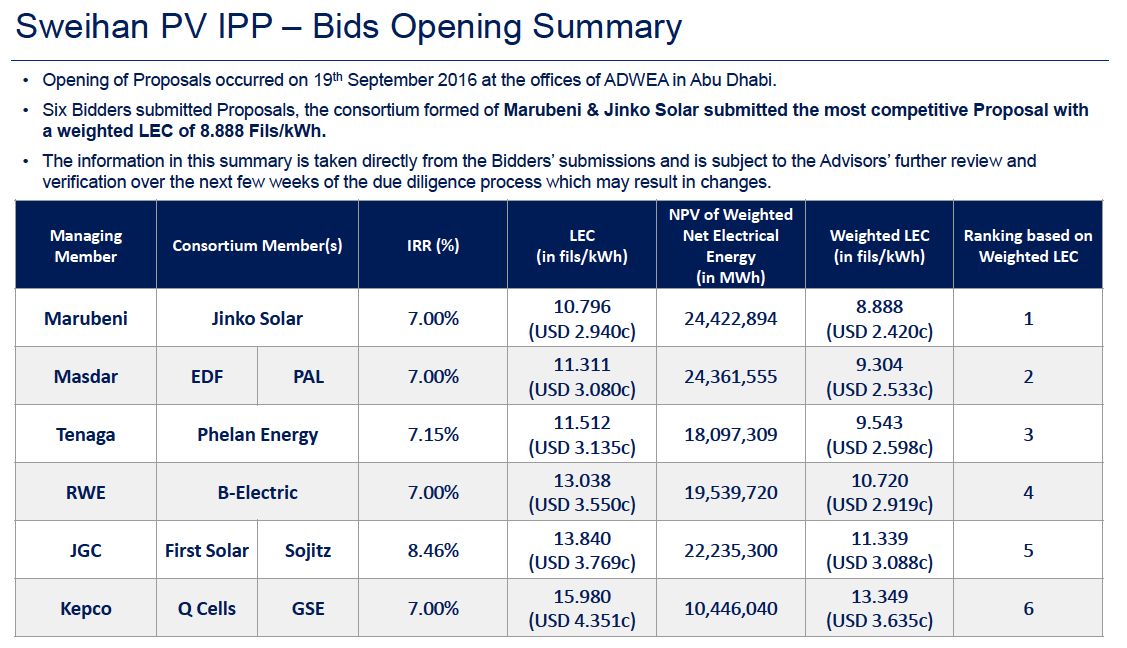Remember when 4-cent solar PV was a big deal? Now it's 3-cent solar -- and soon it could be 2-cent solar.
In the last few months, developers in different regions of the world have bid for projects at prices below 3 cents per kilowatt-hour.
In May, bids from unnamed developers competing for 800 megawatts' worth of projects in Dubai fell as low as 2.99 cents per kilowatt-hour. In August, Solarpack won a contract to sell electricity from a 120-megawatt solar plant in Chile for 2.91 cents per kilowatt-hour. That was nearly a cent lower than the lowest-priced wind contract signed under Chile's national auction, and 2.8 cents lower than the cheapest contract for coal electricity.
On Monday, a bid in Abu Dhabi pushed the record further downward.
According to the Abu Dhabi Electricity and Water Authority, six development teams competing for a 350-megawatt project offered preliminary bids below 4 cents per kilowatt-hour. One coalition -- Jinko Solar and Marubeni -- offered a bid of 2.4 cents.
The projects have not yet been awarded contracts.

Falling equipment prices are allowing large-scale solar developers to bid more aggressively. By the end of this year, module prices will have fallen more than 30 percent as China pulls back on its development targets and oversupply conditions worsen.
"The demand-supply imbalance is the driver for this crazy pricing environment," said Ben Gallagher, a solar analyst for GTM Research. "Even beyond the drop in module pricing, overall total balance-of-system costs will drop by 12 percent by the second half of the year. Even in the U.S., we are going to start seeing dollar-per-watt pricing in some low-cost markets by the end of 2017."
The changes are happening faster than industry leaders predicted.
Last June, former First Solar CEO Jim Hughes described the rapidly changing pricing environment. "I don't remember the last time I saw pricing that had a 7- or 8-cent price in front of it...and [now] we're regularly bidding in at...5- and 6-cent power. We're beginning to see 4- to 5-cent power," he said.
Hughes also predicted that "within 10 years, we'll be talking about low-3-cent power."
If the latest rounds of bids are any indication, he was off by nearly a decade.



